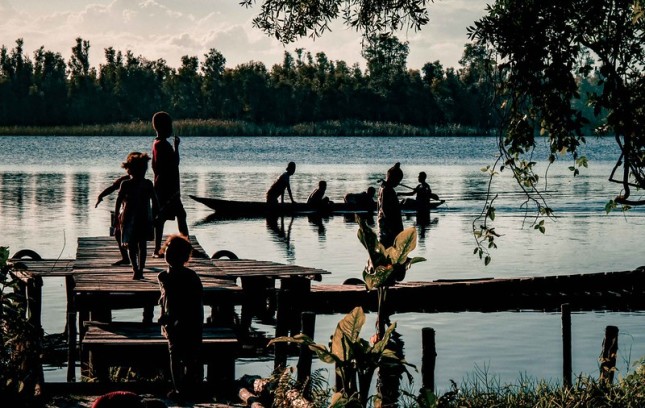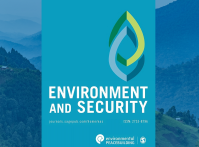-
By, for, and of the People: How Citizen Science Enhances Water Security
December 10, 2019 By Brigitte Hugh
In the Peruvian Andes, where cropland is irrigated and water availability is variable at best, knowledge of highland hydrology is crucial to survival. However, until recently, the locals did not have adequate information to be able to use their water efficiently. So the community worked with a nonprofit to develop a non-specialist/non-researcher run data-gathering project to monitor the water in the region to optimize its use: in short, they developed a citizen science project.
Water Science by the People
Citizen science is the practice of involving members of the general public in scientific work, often collaborating with or under the direction of professional scientists and scientific institutions. Because water science takes so many observations and so much time, experts simply cannot do it all. Data from citizen science projects is robust and can often fill gaps where data does not currently exist.
The beauty of citizen science is its ability to produce useful scientific results while involving the surrounding community, engendering trust with the locals, and creating a more receptive environment for needed, climate-conscious policy shifts. Involvement in volunteer stream monitoring (citizen science) significantly increases the political participation, personal networks, and feelings of community-connectedness among volunteers, said Julie Vastine, Executive Director of Alliance for Aquatic Resource Monitoring. “There’s a connection between collecting data at a specific spot and fostering stewardship,” she said.
When leveraged correctly, citizen science can be a powerful tool for securing and monitoring both water quantity and quality in rural settings. So far, citizen science has been used mainly to assess water quality, but it can also be used to gather data on streamflow, soil moisture, precipitation, vegetation dynamics and water use, and water quantity. In concert with internet of things (IoT) objects, it is easier than ever to involve citizens, and when IoT objects, such as streamflow sensors, are prohibitively expensive, citizen science can still be conducted and provide robust data. The possibilities and benefits of citizen science are numerous.
Overcoming Barriers to use in Developing Countries
Because citizen science has mostly been used in high-income countries—North America and Europe represent most of the cases since 2014, 45 and 20 percent, respectively—there may be barriers to implementation in low-income, developing regions.
In the Americas and Europe, citizen science is seen as a volunteer activity. However, in the remotest parts of the world where it can be of great use, compensation may be necessary as volunteerism is not well established and livelihood options limited. Having some form of compensation can benefit the quantity and quality of data collected. In a citizen science project in Kenya, the one station that reimbursed the cost of sending a data-entry text message gathered seven times the number of reports compared to non-reimbursing stations.
In some cases, a gender-sensitive approach may be necessary in order to attain the best possible data as many of these nations have strict gender roles which prevent women—often the primary procurer of water and those invested in the sector—from participating even when they can provide the best data. For instance, in Kenya, men submitted the most data to the project. Yet it is the women who spend the most time at the river getting water.
Community projects can be effective for local change, but scaling their impact is often difficult where rule of law is feeble. Even if the data from these projects is strong, and policy prescriptions robust, there is little to no impact on governance bodies, said Elizabeth Tyson, Explorer Fellow with the National Geographic Society Citizen Explorer Labs. In some cases, developing countries are turning to education and social media campaigns in order to pressure governments to make changes where rule of law falls short.
Another issue with citizen science implementation in developing countries can be a lack of access to the kinds of resources available in developed countries. For water quality projects, labs are often necessary but cost prohibitive. Some projects have overcome this barrier with small sampling kits, but these are often rudimentary and cannot gather all necessary data. Additionally, water quantity projects may require some training in order for data collectors to take more complicated measurements, but this may be beyond the capacity of the oversight body. In order to overcome this barrier, a project based in rural Kenya made the data collection SMS friendly, which is relatively cheap and readily available even in the remotest parts of the world. At each collection site, the project managers placed a sign which explained the data gathering process in English and in Swahili. Volunteers would then send a simple text message including the reading and the site abbreviation to the researchers. This type of solution is not applicable when more complicated data is needed, but SMS-friendly water experiments can provide great insights at low cost in time or training.
The final obstacle to implementation of citizen science in developing countries is the perception of the local communities. Citizens are often reluctant to become involved in citizen science projects if they do not understand how providing data to the project will benefit them, said Palash Sanyal, a Strategic Partnership Specialist with the Global Institute for Water Security. Or they may be leery of getting involved if the project requires them to provide personal use data which might make them look bad in a neighbor’s eyes. In order to overcome this, you need to communicate first-hand what the citizen science can do for the sector, said Sanyal.
The barriers to implementation may discourage the use of citizen science in developing countries, but many of these barriers can be overcome through effective partnerships with the local community, planning, and ingenuity.
Water Science of and for the People
The best use for citizen science in developing country contexts will be location specific, said Tyson. Some countries may need to focus on water quantity, while others will need to focus on quality. Context means everything because the water quality and quantity questions that can be answered by citizen science come about because of questions from the community, said Vastine. Citizen science is about putting the power of science in the community’s hands, to the extent that citizen science projects often educate volunteers who then become local decision-makers.
Citizen science provides a venue for communities to act after helplessly watching their water grow steadily worse over the years. For instance, even after an initial citizen science project in Lebanon ended, the community continued to test their water using the water-quality testing kits from the project.
Citizen science can create better informed policy while building a foundation for a more sustainable community in the long term. The citizen science project on water quality in Lebanon led to the creation of a water committee to continue the project’s water quality testing and implement local fixes as needed. And a program in Ethiopia worked with staff at all different levels of government, which ultimately led to the recognition of the value of citizen science and preparations for embedding the practice in future activities.
For communities that may otherwise feel helpless in the face water insecurity, citizen science can offer a sense of control. It provides a bottom-up inclusive approach to understanding the natural environment in which citizens live, said Vastine.
Other articles in the Water Security for a Resilient World highlight the connections between water and food security; the need to integrate women into water management; enhancing water security and diplomacy in the Mara River Basin; using data to improve water security; the opportunity for innovative financing to expand access to water; water as a tool for resilience in times of crisis; engaging communities to increase water point functionality; the role of innovative technologies in water security; water and livelihoods in the Mara River Basin; the hidden forces of water in economic prosperity; and the challenges and opportunities of too little water, too much water, dirty water, and unpredictable water.
Sources: Citizen Science Association, “Forests, Water and People in the Humid Tropics” edited by M. Bonell and L.A. Bruijnzeel (see chapter: Ecohydrology and the Critical Zone), Frontiers in Earth Science, Human Ecology Review, Journal of Hydrology, National Science Foundation REACH | Improving water security for the poor, Royal Society Open Science, Science of the Total Environment, The Center for International Forestry Research, U.S. Department of Agriculture.
Photo Credit: Madagascar, September 2017. Photo by Rod Waddington.
 A Publication of the Stimson Center.
A Publication of the Stimson Center.






